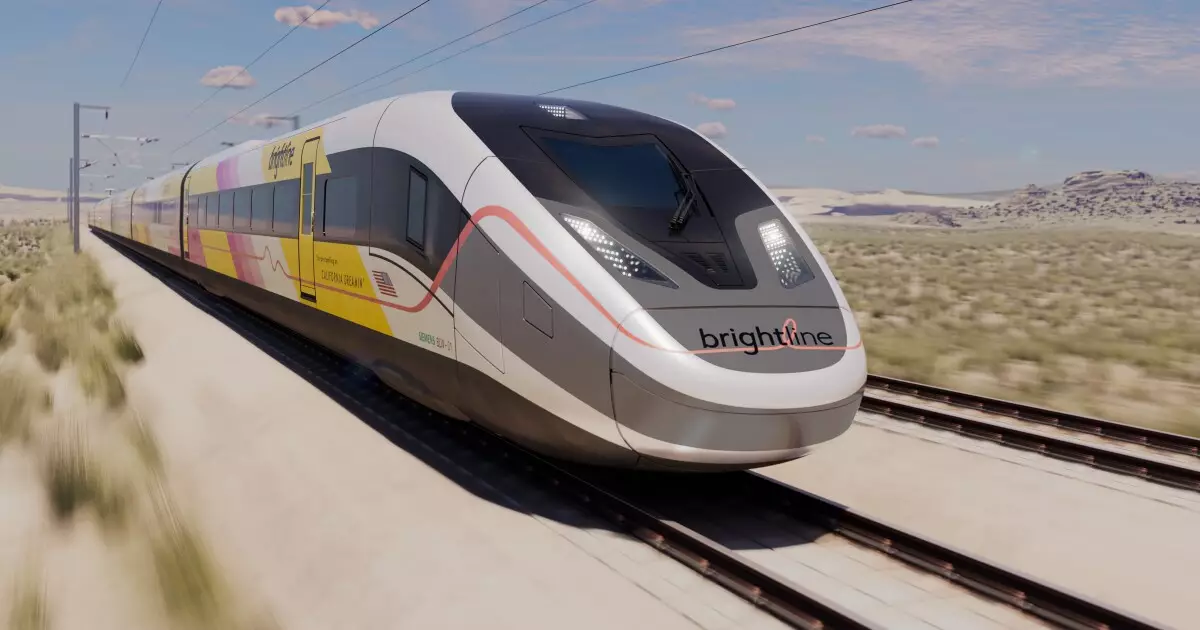The Bold Leap of Brightline West: A New Era for High-Speed Rail Financing

Brightline West, the innovative bullet train service linking Las Vegas and Los Angeles, recently made headlines with its ambitious foray into the municipal bond market. Unveiling a significant $2.5 billion in unrated private activity bonds, the project is poised to reshape the landscape of high-yield municipal borrowing. This funding move, anticipated to be the largest of its kind for the year, illustrates not only financial ambition but also the growing trend of privatized transportation solutions across the United States.
Market Reception and Investor Interest
The bonds were structured with a single $2 billion CUSIP—a designation key to fostering efficient trading and bolstering liquidity within the municipal bond market. The response from investors was robust; more than $3.4 billion in orders flooded in, showcasing strong demand with participation from 75 investing accounts. The overwhelming enthusiasm hints at the financial community’s confidence in the project. With yields approaching 9.5%, investors were drawn to the bonds not only for their attractive coupons but also for the underlying economic rationale of the train system itself.
Financial analysts were quick to laud the bonds. Jim Lyman from Belle Haven Investments framed the opportunity succinctly: the investment promises a compelling yield, robust liquidity, and is backed by a sound economic strategy. It seems that the combination of favorable sponsorship and a unique investment profile made this offering exceedingly hard to resist, turning heads among seasoned investors.
Construction Timeline Hurdles
However, amid this excitement lies a stark reality concerning timelines. Brightline West has slated its operations to launch by December 2028, a date that has already slipped considerably from earlier projections. Originally, the plan aimed for completion by the 2028 Los Angeles Olympics, a target that now appears overly ambitious. This delay raises pertinent questions about the viability and execution of large-scale infrastructure projects in the current political and economic climate.
As part of its multi-step financing strategy, Brightline is tasked with securing an additional $6 billion bank facility. This will be a crucial component, as it is intended to senior the existing bond offerings and provide a cushion that ensures the project can flourish. The looming completion of this financing will be critical; failure to secure these additional funds would trigger a mandatory bond redemption, which could unsettle investors and affect overall market confidence.
Adding an intriguing layer to this financing narrative is the political backdrop. Just as Brightline West stepped into the limelight, the Trump administration highlighted the project for its industrious spirit in contrast to California’s beleaguered high-speed rail ambitions. This praise could serve as a strategic benefit, framing Brightline West as a model of private sector effectiveness in rail transportation. However, it also opens the door for uncertainties, particularly concerning federal grant funds and how political changes may influence future support.
Brightline West is hopeful about the $3 billion federal grant obtained from the Biden administration. But complex conditions shadow the funds, as the operational viability of this grant remains uncertain under shifting political circumstances. The stakes couldn’t be higher, as losing such support could significantly impact project viability.
Another pillar of confidence for investors is the backing by Fortress Investment Group. With significant experience in managing large-scale projects and investments, their support plays a critical role in reassuring investors about the credibility and solvency of Brightline West. Previous experiences from its affiliate, Brightline Florida, provide additional insight into the company’s operations and commitment to delivering on its promises.
The company plans to commence construction this year, a step that could validate the ambitious financial arrangements. Post-construction, the prospect of achieving investment-grade ratings for outstanding tax-exempt bonds creates an enticing vision of a future where high-speed rail is not just a dream, but a reality enhancing national transportation infrastructure.
In closing, Brightline West represents a bold venture into the future of transportation. It signifies a shift in how infrastructure projects can harness private investments while enticing municipal backing. While challenges abound, from navigating political landscapes to technical execution, this high-speed rail initiative presents an opportunity for a new era in America’s transport network. Investors and stakeholders alike will keenly observe as Brightline West navigates the trials of development and financing—awaiting the moment when its trains will finally roll down the tracks of American highways.





